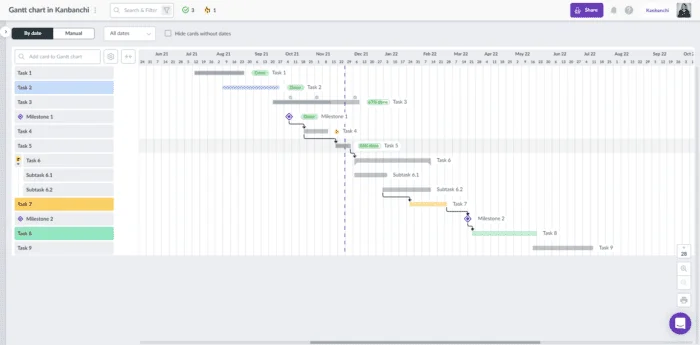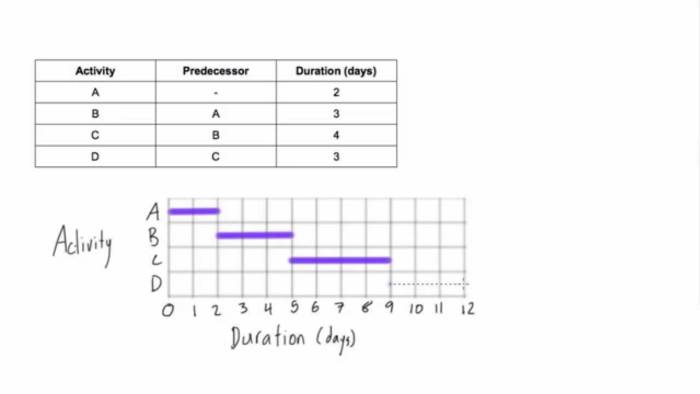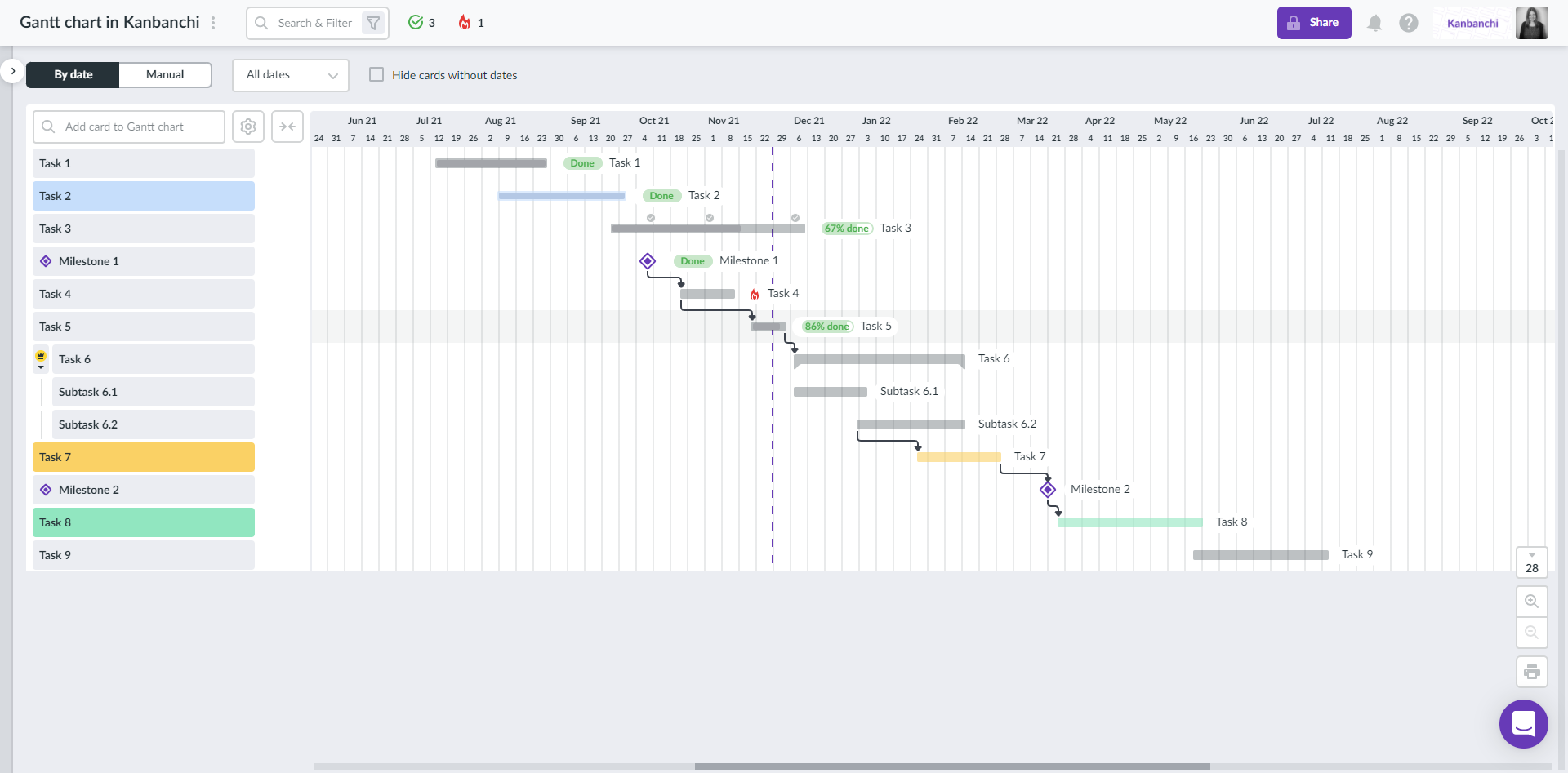
How Can a Gantt Chart Tool Help You with Your Projects?
There is a good chance that you have heard about any Gantt chart tool before now but do you know what they do? Even more importantly, do you understand how using them well can benefit you and your future projects?
What Is a Gantt Chart?
First created by Henry Laurence Gantt in the early 20th century, this is a clever, visually appealing way of staying on top of a project. The simplest way of describing a Gantt chart is as a way of visualising the progress of a piece of work.

In its most basic form, this is a list of the tasks to be done, organised in such a way that you can understand at a glance what is coming up next. The important dates, the duration of the task and how it links to other tasks can all be easily seen on one chart.
This type of tool can be used for simple projects as well as for highly complex pieces of work. Once you understand how to create, use and read a Gantt chart you can use them in any type of project of any size.
The Benefits of Using Gantt Charts
There are numerous reasons why Gantt charts are so widely used these days. The simple perfection of this approach brings with it a range of useful benefits.
- Makes complex information easy to explain. Trying to describe the different elements of a complex project can seem almost impossible at times. Yet, with a Gantt chart, you can explain the whole thing to anyone in a highly convenient way.
- A standardised approach. Wherever you go in the world, you are likely to find project teams and startups using these charts. This means that you can introduce new team members seamlessly or explain your work to prospective investors effortlessly.
- Minimises the risk of confusion or overlap. Keeping control of a large piece of work that is split over a sizeable team can be a tough challenge. With a Gantt chart tool, you can clearly see who is doing what and when.
- Can be used to organise thoughts. It is easy to think that you only create your new chart once you are completely sure of what you are going to do. However, using a Gantt chart tool also gives you a handy way of organising your thoughts while you are still at the planning stage.
- Breaks down big projects into smaller chunks. Big pieces of work can seem overwhelming when they are presented in a text format. On the other hand, the visual format of Gantt charts helps to break the whole thing up into an easily digestible presentation.
- Clearly shows the impact of delays or issues. The fact that tasks are linked means that the knock-on effect of problems or delays is easy to spot. There is no need to guess or scramble around at the last minute trying to work out what could happen next.
Specific Reasons to Try Using a Gantt Chart
As we have seen, there are some very good general benefits to adopting a Gantt chart approach. Yet, you may wonder how it could specifically help you. What exactly can it add to your business that makes it worthwhile?
- Free up your time. If time is in short supply currently then this can be a terrific way of freeing up more of it. Running an efficient project is a lot easier with one of these charts. You will save time on explaining the details to people and also on updating any changes.
- Delegate to the team. The fact that tasks can be clearly explained here makes it easier to delegate effectively. The team members will see at a glance the timescales they are working to and how the task corresponds with the overall goals.
- Be flexible and adapt to changing situations. The ability to react to changes is vital in the modern business world. With a good Gantt chart tool, you can very easily move the dates or switch around tasks to see how best to respond to anything that comes your way.
- Avoid expensive mistakes. Perhaps the biggest reason for adopting this method is to avoid making costly errors. You should be able to see problems early on and work out a way of making sure that they don’t take you by surprise.
What Else Do Modern Gantt Charts Offer?
As mentioned earlier, this kind of project tool has been around for a very long time. The earliest versions were simple, handwritten graphs that covered the most basic information and were filled in as the project progressed.
The arrival of the computing age allowed us to begin to use Gantt chart tools much more effectively. Now we can update them instantly, maintain different versions and keep everything impeccably tidy no matter how many changes they undergo.
Cloud computing has also taken this approach to a different level. It is now possible to collaborate in real-time with colleagues all over the world. The agility and flexibility provided by these advances make running even extremely complex projects a pleasure.
There are many Gantt chart tool options around these days. This is a busy, competitive market that has something that is right for every need.
Using a Gantt Chart within Kanbanchi
Gantt chart is the tool that we recommend for keeping your projects easy to understand and always on the right track. With a user interface that is simple, clear and intuitive to use, this is a tool that anyone can pick up almost instantly.

Even more beneficial is the fact that the chart is combined with a Kanban board. In this way, you can plan tasks on the Gantt chart before moving them on to the Kanban board to go through the workflow stages. Also, this powerful combination allows you to switch between the Gantt chart view and the Kanban view to focus on some particular aspects of your workflow.
This agile and highly flexible way of working can be used in any type of industry and with projects of varying degrees of difficulty and complexity.
Discover how easy your life becomes when you use the Kanbanchi approach to planning and running your projects.
